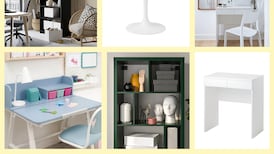When you stand outside this 1940s semidetached house in Raheny, it’s clear that refurbishment work has been done, but that doesn’t prepare you for the dramatic transformation that lies behind the front door.
The eye is immediately drawn to the garden that lies at the end of the light-filled, spacious kitchen and living area. Previously, there was a modest kitchen and separate livingroom, but now the living area is a large and welcoming space, capable of comfortably hosting up to 40 people for family get-togethers.
The house needed some love and attention when the couple with two young children bought it in 2017. They replaced windows and added insulation to make it habitable, and then took a deep breath while they planned the big refurbishment.
Their main priority was to create a warm and welcoming kitchen with an area for the children to play in, and a separate sittingroom and downstairs toilet. At that stage, it was a three-bedroom house and they wanted to add another bedroom which would include an office to facilitate working from home.
READ MORE
While flicking through a magazine, their eye was caught by a house designed by Jim Lawler of MeltedSnow Architects, and they decided to meet him. He specialises in residential projects in the Dublin area and says his emphasis is on contemporary and sensible energy-efficient design.
[ Look inside: Stunning beachfront house hovering over the water in Howth for €3.6mOpens in new window ]
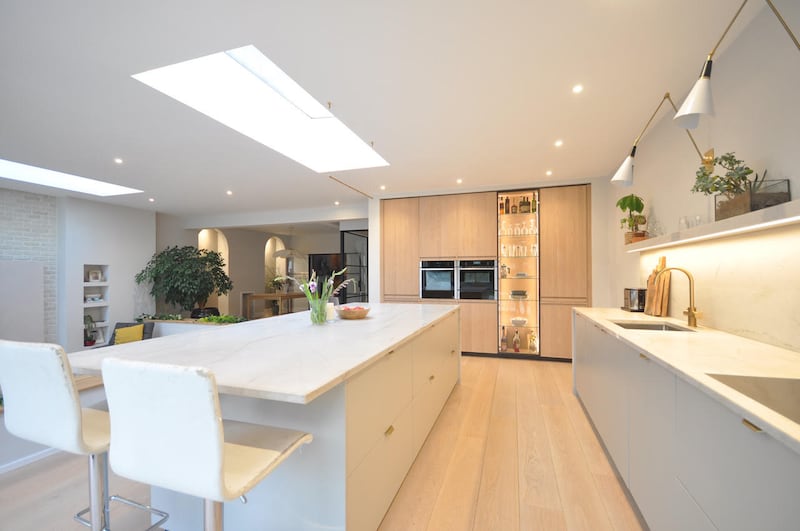
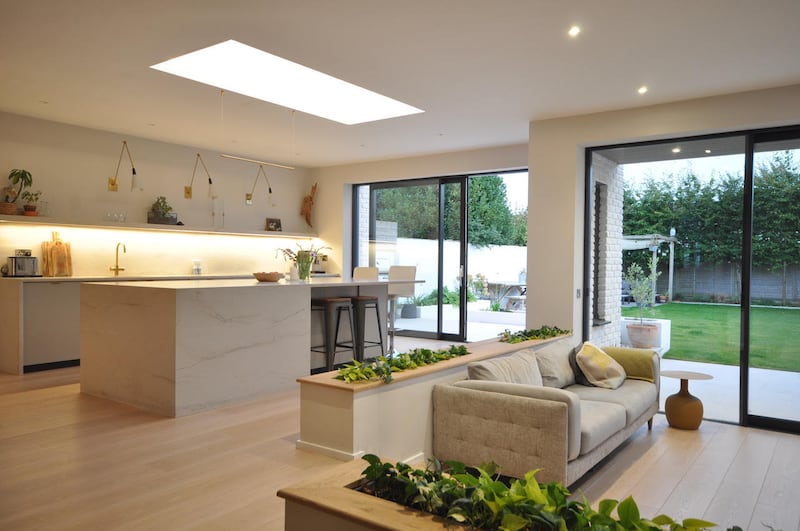
“This project was all about creating a design that would transform the house for modern family life,” he says. As soon as he stepped into the home, he knew that the large south-facing garden would be central to the plan. It was 25 metres long, and is still a substantial garden, even after losing seven metres to the new kitchen and living area.
“The existing house was in need of refurbishment and modernisation and the layout was inadequate and undersized for the family’s requirements,” he says. Together they decided on a broken-plan kitchen and dining area, with the living area on a lower level overlooking the garden.
“This broken-plan arrangement offers different experiences in the one space,” he explains. “The location of the lounge area set slightly away from the kitchen means it is quieter and also capitalises on the peaceful view of the garden. Someone cooking in the kitchen will not impinge on someone relaxing in the lounge.”
[ Sleek and stylish Churchtown four-bed off Braemor Road for €1.195mOpens in new window ]
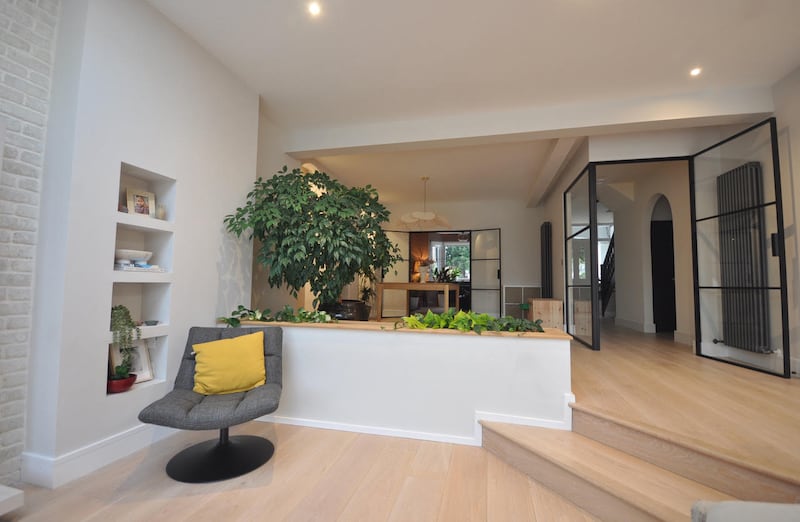

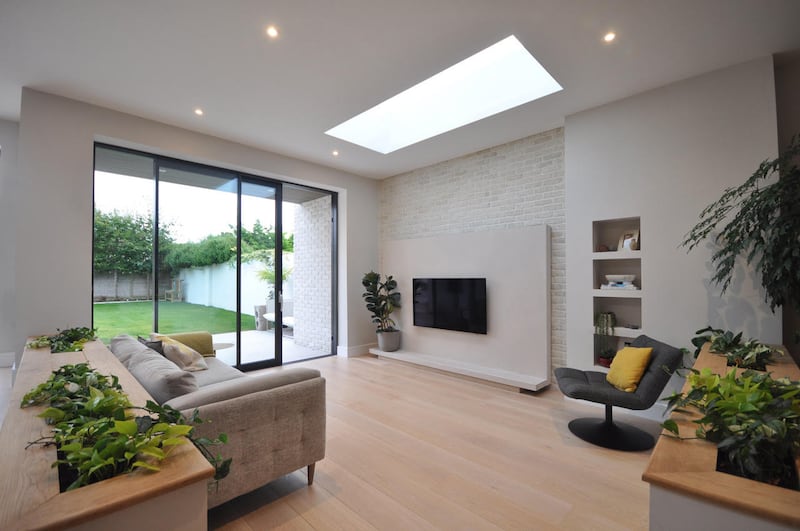
The large, black-framed sliding doors in the kitchen and living area give access to the two patio levels and the split-level design is continued into the garden with a sunken lounge.
The overall feel of the kitchen and living area, with its clean lines and a neutral palette of materials, was described by one visitor as Japandi – a blend of Japanese and Scandinavian design styles.
And while the homeowners liked the idea of an open-plan area for all the family to enjoy, they also saw the need for a separate livingroom at the front of the house. The dark chestnut pink walls give it a snug and cosy feel, ideal for relaxing in the evening.
The single-storey garage made way for a new utility room and bathroom.
Upstairs, a dormer roof extension provides a spare bedroom and bathroom and doubles as a home office.
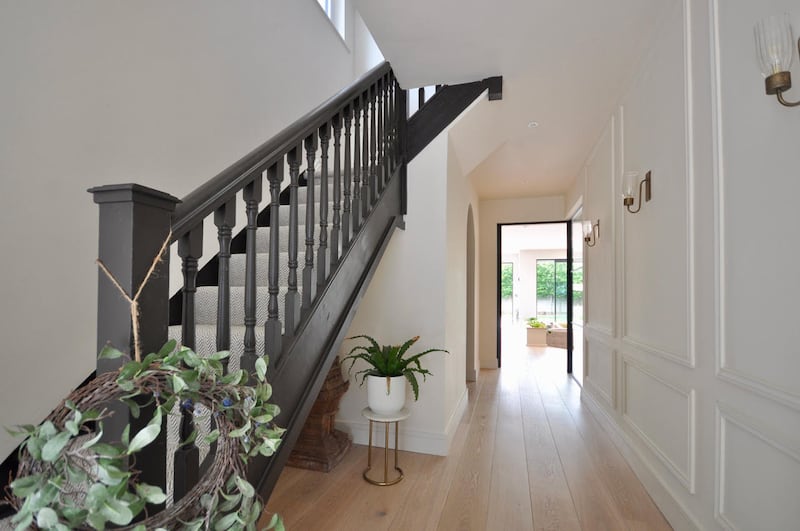

One of the homeowners’ favourite elements of the renovation is the comfortable living environment, thanks to the deep retrofit completed by Churchfield Home Services. Underfloor heating, a heat pump, added insulation and some triple glazing all combine to give the house its A2 BER rating.
Modernising a semidetached house for a growing family is a common renovation project and it comes with a familiar challenge, according to Lawler. As anyone who has ever watched RTÉ's Room to Improve will know, it’s all about the budget. He says the challenge lies in delivering the design vision while keeping within the budget. Those sudden shocks that occur when an additional €10,000 needs to be found might provide good television, but it is something he goes to great pains to avoid.
“This is achieved by advance planning along with very regular meetings and communication regarding agreed and ongoing cost items,” he says. “It is crucial that all parties are aware of any cost variations or extras that may occur during the project works. Working with your architect and possibly a QS, [quantity surveyor] depending on the scope of the works, ensures that any budget issues are avoided.”
True to his word, this project, which involved local builders Ballyfarna Construction, did not go over budget. And luckily for the owners, no nasty surprises ambushed them mid-build.
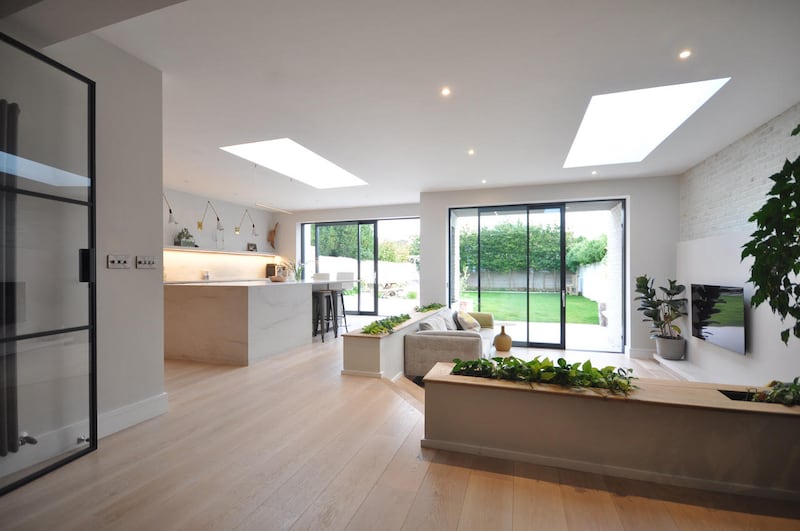
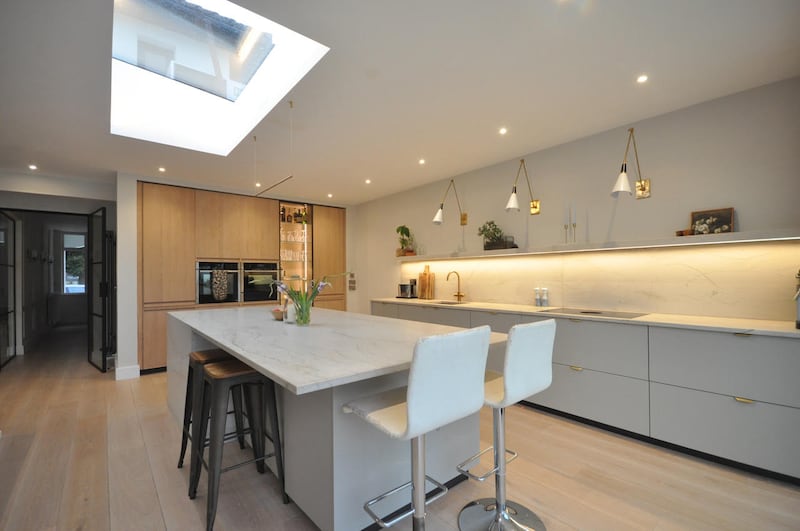
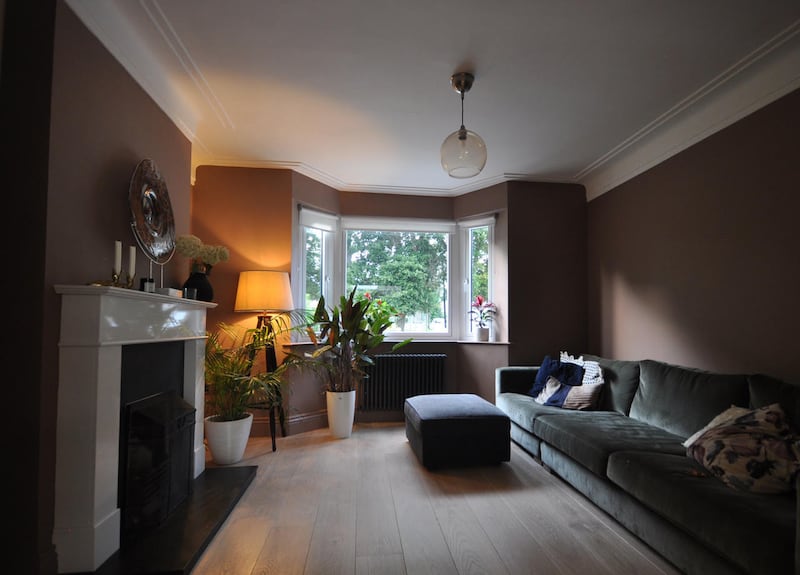
“The project was a great success and a lot of this was down to the synergy between the homeowner, builder and architect,” he says. “We knew from the start what we wanted to achieve and we kept focused on this throughout the project.”
The homeowners are now looking forward to sliding those patio doors open and spending as much time as possible in the garden with their children this summer.
“I’m delighted my clients now have the home that they wanted – large enough to fulfil the requirements of their growing family along with being a bright, contemporary space that maximises the potential of their south-facing garden,” he says.
- Sign up for push alerts and have the best news, analysis and comment delivered directly to your phone
- Find The Irish Times on WhatsApp and stay up to date
- Our In The News podcast is now published daily – Find the latest episode here






